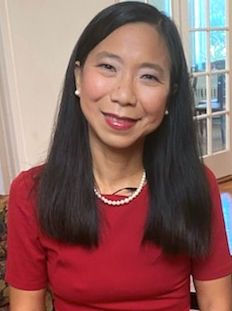Takeaways
- Culinary medicine in medical education
- Mental and physical benefits of an anti-inflammatory diet
- Practical tips for talking to patients about nutrition
- Addressing disordered eating and promoting a wise approach to nutrition
- Engaging children in food exploration and positive cooking experiences
Michelle Loy, assistant professor, Weill Cornell Medicine/NewYork-Presbyterian Weill Cornell Medical Center, New York, New York, spoke with Contemporary Pediatrics about her session, “Culinary Medicine: Using Food for Physical, Mental and Environmental Health,” which she presented with Maria R. Mascarenhas, MBBS, section chief, nutrition, Division of Gastroenterology, Hepatology and Nutrition at the Children’s Hospital of Philadelphia, Pennsylvania.
Contemporary Pediatrics:
Tell us about your session on using food as medicine at the AAP National Conference & Exhibition.
Michelle Loy, MD, FAAP:
[At our presentation], we covered the role of culinary medicine in medical education for patient care and for self-care. Another main objective was related to describing the mental and physical benefits of an anti-inflammatory diet.
So, we went through vegetables, fruits, whole grains, beans, seeds, legumes…spices, and we had a demonstration table with spices [including] cumin, coriander, ginger, turmeric, basil…oregano, mint, coriander, Schisandra, hibiscus, all kinds of teas, so people could actually come up and take a look.
We were also giving practical tips: things like how you talk to your patients about nutrition, different age groups, patients who are facing food insecurity. I shared a helpful resource from the Special Supplemental Nutrition Program for Women, Infants, and Children [WIC], which gives a bunch of recipes [as well as] nutrition facts [and] cost breakdowns. Using the lists of foods that are available on WIC, [3 meals a day plus snacks], we’re talking about foods like French toast, banana ice cream…good food.
It is…important when you talk about nutrition that you do it in a wise manner. You don’t trigger some [eating disorder]: We’re facing a crisis with disordered eating orthorexia, anorexia, bulimia, binge eating disorder. I see all kinds of feeding type situations. So, it’s important that we approach it in a wise manner.
There’s a program that is in actuality a bunch of work centers, and in New York City where they use a puppet and children and caregivers prepare food together, and they use the puppet and a magnifying glass and look at things like bumpy squash and smooth plums. And when they play around with the food, they are much more engaged and much more willing to try new foods.
So, it’s not about restricting—not saying, “You can’t eat this until you finish all your broccoli”—but it’s adding rather than restricting. Engaging [children] in food shopping with you, even doing things like they do on the TV show Chopped; give them a bunch of foods and let them come up with their own dish. If they make it, they’re going to try it. And you know, that’s another way of doing it.
[We also discussed] culinary ways that you can share with your patients if they’re cooking. Like combining avocado and some greens increases lutein intake by…7 times. Or if you’re going to…barbecue something and it’s going to release heterocyclic amines, which aren’t so good…marinate with some rosemary or some vinegar, to help mitigate those effects. Watermelon, if you leave it out, it increases lycopene intake level.
Contemporary Pediatrics:
How can the pediatrician’s own experiences play a role?
Loy:
In the beginning, when I taught medical education, I [presented] some different ways where culinary medicine can be brought into medical education, and there are actually studies showing that if they engage in these education opportunities, it affects them personally, in a good way and also [in] their growth as a clinician where they are much more effective in counseling.
And a lot of studies show that many people want nutrition from their physicians, but they aren’t getting it. If the physician brings up [the subject]…70% or 80% of them, they will make changes. Yet, about 80% of physicians don’t feel comfortable talking about it.
And so, I think it’s important just to bring awareness to that. So many of [the attendees at this session] talked about their own experiences making changes and the benefits there. Some had questions about how to do this with young children, or their own children: they want to feed them really healthy foods, but then what happens when they go to a birthday party? And this has been my experience, as a clinician and also as a parent…lead by example, and if most of the time they’re getting good food at home, when they go somewhere else, they come back, they don’t feel so good [from what they ate]. And they’ll figure this out by themselves…. I don’t really want to feel like that. Which is great [in terms of children learning], because it’s not because we said, “It’s not OK.”
For Contemporary Pediatrics' full video interview with Michelle Loy, click here.

